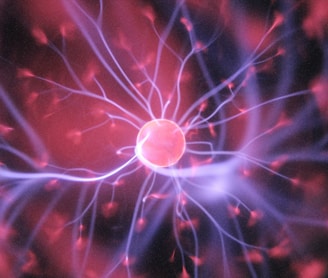Neuroplasticity
NEURO


One of the biggest discoveries in 20th century in neuroscience was neuroplasticity. It is a capacity for reorganization and adaptation throughout the lifespan, including post-injury adaptive capacities of the nervous system to change following deprivation of input or overstimulation, increased or decreased usage or learning of new skills. These changes are engendered by creating new neural pathways or through modification of existing ones.
The ability of the brain to change and reorganize itself and its function is called neuroplasticity, and it is a gift on par with neurogenesis, our ability to generate new brain cells throughout our lifetimes. Understanding the intricate complexities of brain anatomy is essential to fully know about neuroplasticity. Neuroplasticity provides us with a brain that can adapt not only to changes inflicted by damage, but more importantly, allows adaptation to any and all experiences and changes we may encounter, freeing us from merely responding reflexively as a consequence of genetically determined hardwiring.
Brain plasticity is a term describing changing connections between neurons and neuronal networks in the brain. Dr. Schwartz, the once ridiculed and revolutionary idea that we can deliberately use our mind to change the brain, is now widely accepted in the mainstream. Deficits in low-level skills (such as perception and motor abilities), resulting from deprivation in the early years of life, are unlikely to be overcome through brain plasticity. In contrast, the development of high-level skills (such as reading, writing, and mathematics) is not limited to specific, sensitive periods, and can therefore continue to develop over the lifespan.
Michael Gazzaniga, one of the leading researchers in the field of neuroscience, made huge contributions to our understanding of how the left and right hemispheres of the brain communicate. Often referred to as "the father of cognitive neuroscience," he is undoubtedly one of the most provocative thinkers of our time.
Spanish histologist, Santiago Ramon Y Cajal, received the 1906 Nobel Prize for unravelling the mysteries of the human brain and establishing the neuron as the basic unit of the nervous system. His proof of the 'neuron doctrine' is now the absolute basis of neuroscience. This finding was instrumental in recognizing the neuron’s fundamental role in the nervous system.
How does neuroplasticity come about?
While the individual working unit of the brain is the single neuron, even simple tasks require the recruitment of vast numbers of interconnected neurons functioning as a unit or network devoted to accomplishing even the simplest activity. Dr. Joe Dispenza, in his book, Evolve Your Brain, eloquently described the neural network as, “…literally millions of neurons firing together in diverse compartments, modules, sections, and subregions throughout the entire brain. They team up to form communities of nerve cells that act in unison as a group, clustered together in relation to a particular concept, idea, memory, skill, or habit. Whole patterns of neurons throughout the brain become connected through the process of learning, to produce a unique level of mind.” The neural network represents a specific unique pattern of connections of neurons that fire in a specified sequence that allows you to accomplish tasks.
But how do individual neurons actually connect? What motivates the connection and keeps them connected? The pioneering research in this area dates back to the work of Canadian psychologist, Dr. Donald Hebb who proposed a theory he felt would explain how neurons could develop a relationship with one another.
Neurons develop a relationship that facilitates future coordinated activation as a response to being repeatedly stimulated. This is how networks are constructed.
